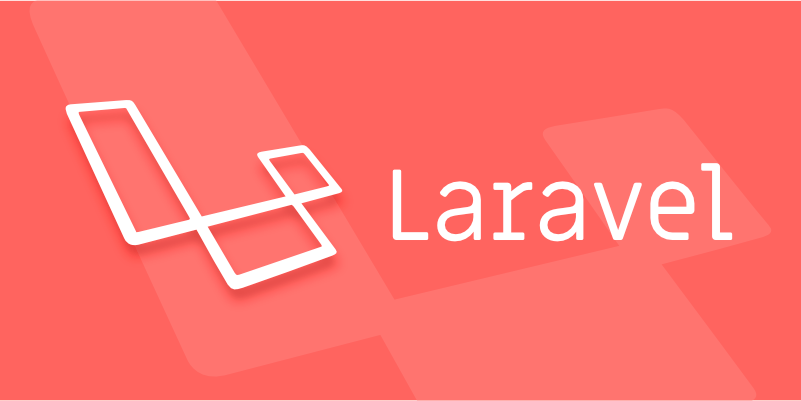How to create a custom validation rule in Laravel?
There are three main ways to create custom verification rules in Laravel, suitable for different scenarios. 1. Use the Rule class to create reusable verification logic: generate the class through php artisan make:rule ValidPhoneNumber, and introduce and use it in the controller, suitable for complex and reusable situations; 2. Use closures in the verification rules: directly write one-time verification logic in the validate method, such as checking the length of the username, suitable for simple and only once-using scenarios; 3. Add custom rules in Form Request: Add closures or introduce Rule classes in the rules() method of form requests, which are clear and easy to manage; in addition, you can customize the error prompt field name through the attributes() method to improve user experience.

Creating custom verification rules in Laravel is not difficult, the key is to understand its verification mechanism and extension methods. The most common method is to create a rule class through make:rule command, or to verify it directly in the form request or controller.

Below are several methods you may use in actual development, suitable for different scenarios.
Use the Rule class to create reusable verification logic
Creating a Rule class is the best choice when you need to use the same verification logic in multiple places.

- Generate Rule class:
php artisan make:rule ValidPhoneNumber
This will generate a new class in app/Rules directory.
- Edit this class, such as verifying whether a mobile phone number meets the format:
namespace App\Rules;
use Illuminate\Contracts\Validation\Rule;
class ValidPhoneNumber implements Rule
{
public function passes($attribute, $value)
{
// Simple example: Verify whether it is an 11-digit number return preg_match('/^\d{11}$/', $value);
}
public function message()
{
return 'Please enter a valid mobile phone number. ';
}
}- Use it in the controller:
use App\Rules\ValidPhoneNumber;
$request->validate([
'phone' => ['required', new ValidPhoneNumber],
]);This method is suitable for situations where logic is relatively complex and needs to be reused.

Use Closure in Verification Rules (Closure)
If you just use it once in a specific place and don't want to create a separate class, you can directly use closures to write the verification logic.
$request->validate([
'username' => ['required', function ($attribute, $value, $fail) {
if (strlen($value) < 5) {
$fail('The username requires at least 5 characters.');
}
}],
]);This method is fast to write and is suitable for one-time verification, but is not conducive to reuse and maintenance.
Add custom rules in Form Request
If you are using Form Request, you can add custom rules to it.
- Generate a Form Request:
php artisan make:request StoreUserRequest
- Add custom validation to
rules()method:
public function rules()
{
Return [
'email' => 'required|email',
'phone' => [ 'required', function ($attribute, $value, $fail) {
if (!preg_match('/^\d{11}$/', $value)) {
$fail('Please enter a valid mobile phone number');
}
}],
];
}Or you can also introduce Rule class here to make the structure clearer.
Extra tip: Customize the field name of the error prompt
Sometimes you may want to display a more friendly field name when an error is reported, such as "mobile phone number" instead of "phone". You can use attributes() method or define it in a language file:
$request->validate([
'phone' => new ValidPhoneNumber
], [], [
'phone' => 'mobile number'
]);This will display the error message as:
Please enter a valid mobile phone number for mobile phone number.
Basically that's it. You can choose the appropriate method according to the actual project requirements: if you need to reuse, use the Rule class, use closures for temporary verification, and use Form Request for clear structure.
The above is the detailed content of How to create a custom validation rule in Laravel?. For more information, please follow other related articles on the PHP Chinese website!

Hot AI Tools

Undress AI Tool
Undress images for free

Undresser.AI Undress
AI-powered app for creating realistic nude photos

AI Clothes Remover
Online AI tool for removing clothes from photos.

Clothoff.io
AI clothes remover

Video Face Swap
Swap faces in any video effortlessly with our completely free AI face swap tool!

Hot Article

Hot Tools

Notepad++7.3.1
Easy-to-use and free code editor

SublimeText3 Chinese version
Chinese version, very easy to use

Zend Studio 13.0.1
Powerful PHP integrated development environment

Dreamweaver CS6
Visual web development tools

SublimeText3 Mac version
God-level code editing software (SublimeText3)
 Choosing between Laravel Sanctum and Passport for API authentication
Jul 14, 2025 am 02:35 AM
Choosing between Laravel Sanctum and Passport for API authentication
Jul 14, 2025 am 02:35 AM
LaravelSanctum is suitable for simple, lightweight API certifications such as SPA or mobile applications, while Passport is suitable for scenarios where full OAuth2 functionality is required. 1. Sanctum provides token-based authentication, suitable for first-party clients; 2. Passport supports complex processes such as authorization codes and client credentials, suitable for third-party developers to access; 3. Sanctum installation and configuration are simpler and maintenance costs are low; 4. Passport functions are comprehensive but configuration is complex, suitable for platforms that require fine permission control. When selecting, you should determine whether the OAuth2 feature is required based on the project requirements.
 Managing database state for testing in Laravel
Jul 13, 2025 am 03:08 AM
Managing database state for testing in Laravel
Jul 13, 2025 am 03:08 AM
Methods to manage database state in Laravel tests include using RefreshDatabase, selective seeding of data, careful use of transactions, and manual cleaning if necessary. 1. Use RefreshDatabasetrait to automatically migrate the database structure to ensure that each test is based on a clean database; 2. Use specific seeds to fill the necessary data and generate dynamic data in combination with the model factory; 3. Use DatabaseTransactionstrait to roll back the test changes, but pay attention to its limitations; 4. Manually truncate the table or reseed the database when it cannot be automatically cleaned. These methods are flexibly selected according to the type of test and environment to ensure the reliability and efficiency of the test.
 Generating URLs for Named Routes in Laravel.
Jul 16, 2025 am 02:50 AM
Generating URLs for Named Routes in Laravel.
Jul 16, 2025 am 02:50 AM
The most common way to generate a named route in Laravel is to use the route() helper function, which automatically matches the path based on the route name and handles parameter binding. 1. Pass the route name and parameters in the controller or view, such as route('user.profile',['id'=>1]); 2. When multiple parameters, you only need to pass the array, and the order does not affect the matching, such as route('user.post.show',['id'=>1,'postId'=>10]); 3. Links can be directly embedded in the Blade template, such as viewing information; 4. When optional parameters are not provided, they are not displayed, such as route('user.post',
 What is Configuration Caching in Laravel?
Jul 27, 2025 am 03:54 AM
What is Configuration Caching in Laravel?
Jul 27, 2025 am 03:54 AM
Laravel's configuration cache improves performance by merging all configuration files into a single cache file. Enabling configuration cache in a production environment can reduce I/O operations and file parsing on each request, thereby speeding up configuration loading; 1. It should be enabled when the application is deployed, the configuration is stable and no frequent changes are required; 2. After enabling, modify the configuration, you need to re-run phpartisanconfig:cache to take effect; 3. Avoid using dynamic logic or closures that depend on runtime conditions in the configuration file; 4. When troubleshooting problems, you should first clear the cache, check the .env variables and re-cache.
 Handling HTTP Requests and Responses in Laravel.
Jul 16, 2025 am 03:21 AM
Handling HTTP Requests and Responses in Laravel.
Jul 16, 2025 am 03:21 AM
The core of handling HTTP requests and responses in Laravel is to master the acquisition of request data, response return and file upload. 1. When receiving request data, you can inject the Request instance through type prompts and use input() or magic methods to obtain fields, and combine validate() or form request classes for verification; 2. Return response supports strings, views, JSON, responses with status codes and headers and redirect operations; 3. When processing file uploads, you need to use the file() method and store() to store files. Before uploading, you should verify the file type and size, and the storage path can be saved to the database.
 How to perform Request Validation in Laravel?
Jul 16, 2025 am 03:03 AM
How to perform Request Validation in Laravel?
Jul 16, 2025 am 03:03 AM
There are two main methods for request verification in Laravel: controller verification and form request classes. 1. The validate() method in the controller is suitable for simple scenarios, directly passing in rules and automatically returning errors; 2. The FormRequest class is suitable for complex or reusable scenarios, creating classes through Artisan and defining rules in rules() to achieve code decoupling and reusing; 3. The error prompts can be customized through messages() to improve user experience; 4. Defining field alias through attributes() to make the error message more friendly; the two methods have their advantages and disadvantages, and the appropriate solution should be selected according to project needs.
 Explain Laravel Eloquent Scopes.
Jul 26, 2025 am 07:22 AM
Explain Laravel Eloquent Scopes.
Jul 26, 2025 am 07:22 AM
Laravel's EloquentScopes is a tool that encapsulates common query logic, divided into local scope and global scope. 1. The local scope is defined with a method starting with scope and needs to be called explicitly, such as Post::published(); 2. The global scope is automatically applied to all queries, often used for soft deletion or multi-tenant systems, and the Scope interface needs to be implemented and registered in the model; 3. The scope can be equipped with parameters, such as filtering articles by year or month, and corresponding parameters are passed in when calling; 4. Pay attention to naming specifications, chain calls, temporary disabling and combination expansion when using to improve code clarity and reusability.
 Using the Translator facade for Localization in Laravel.
Jul 21, 2025 am 01:06 AM
Using the Translator facade for Localization in Laravel.
Jul 21, 2025 am 01:06 AM
TheTranslatorfacadeinLaravelisusedforlocalizationbyfetchingtranslatedstringsandswitchinglanguagesatruntime.Touseit,storetranslationstringsinlanguagefilesunderthelangdirectory(e.g.,en,es,fr),thenretrievethemviaLang::get()orthe__()helperfunction,suchas







